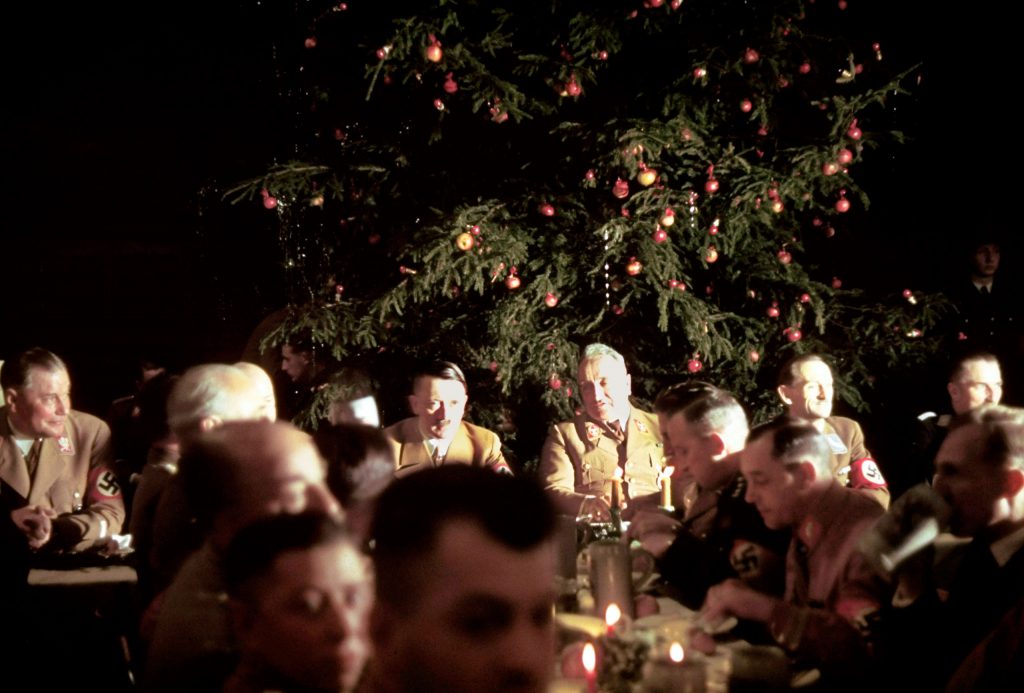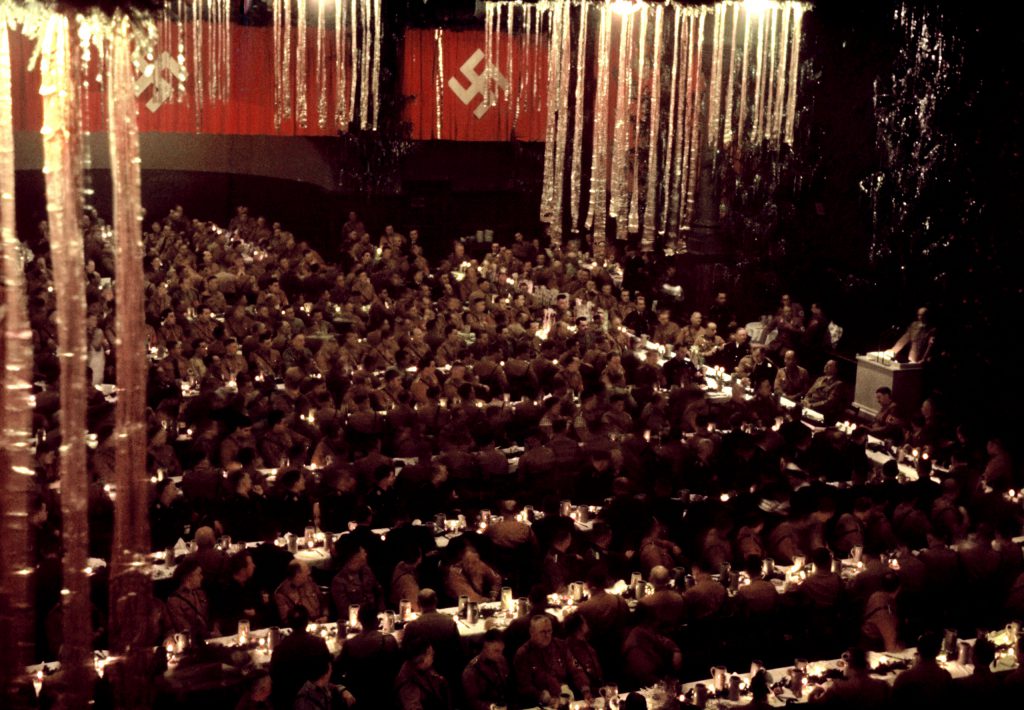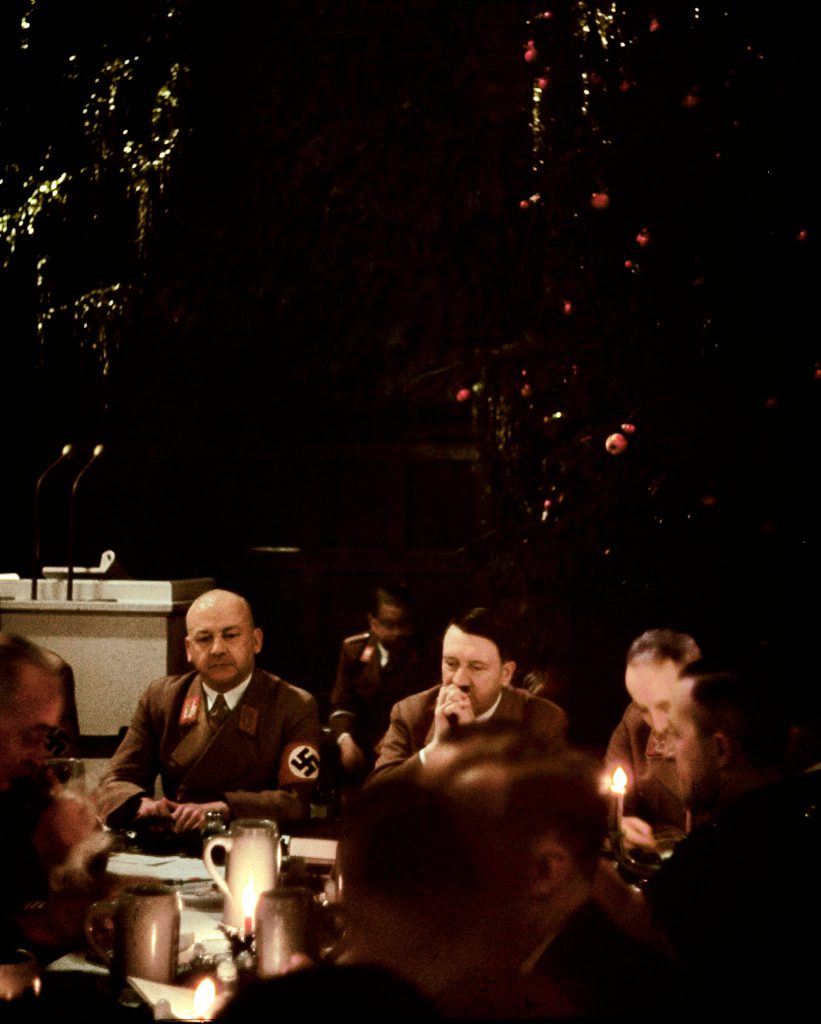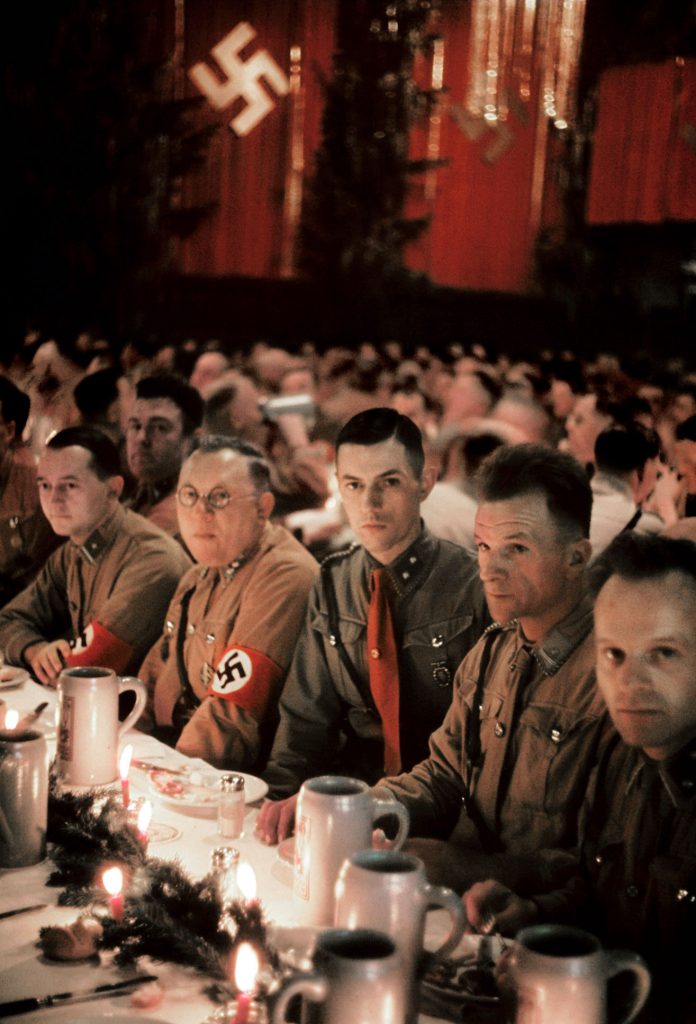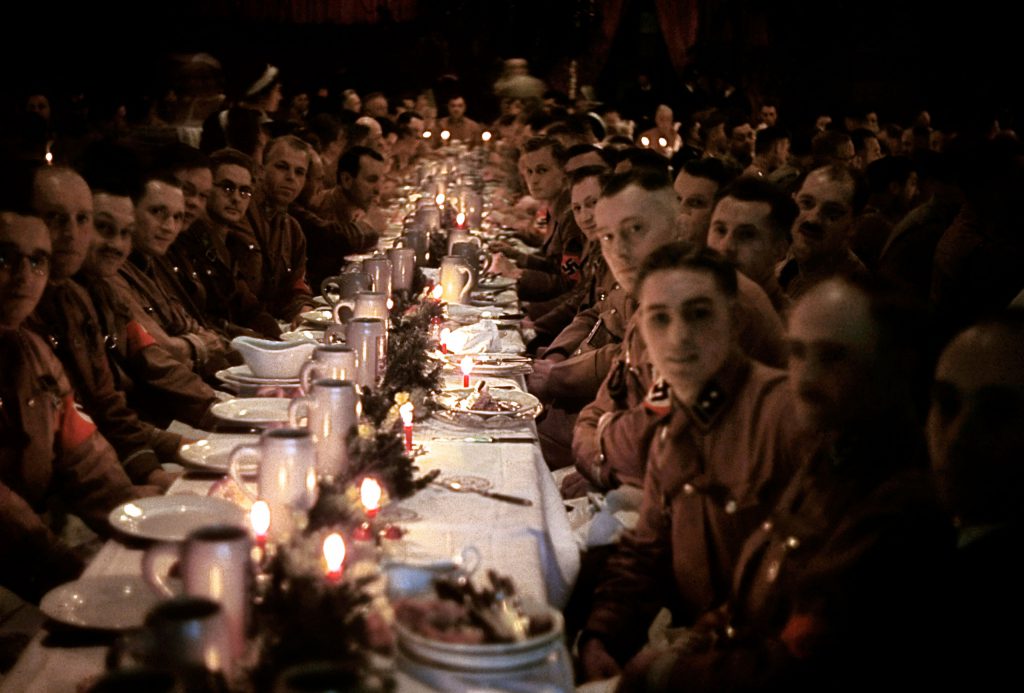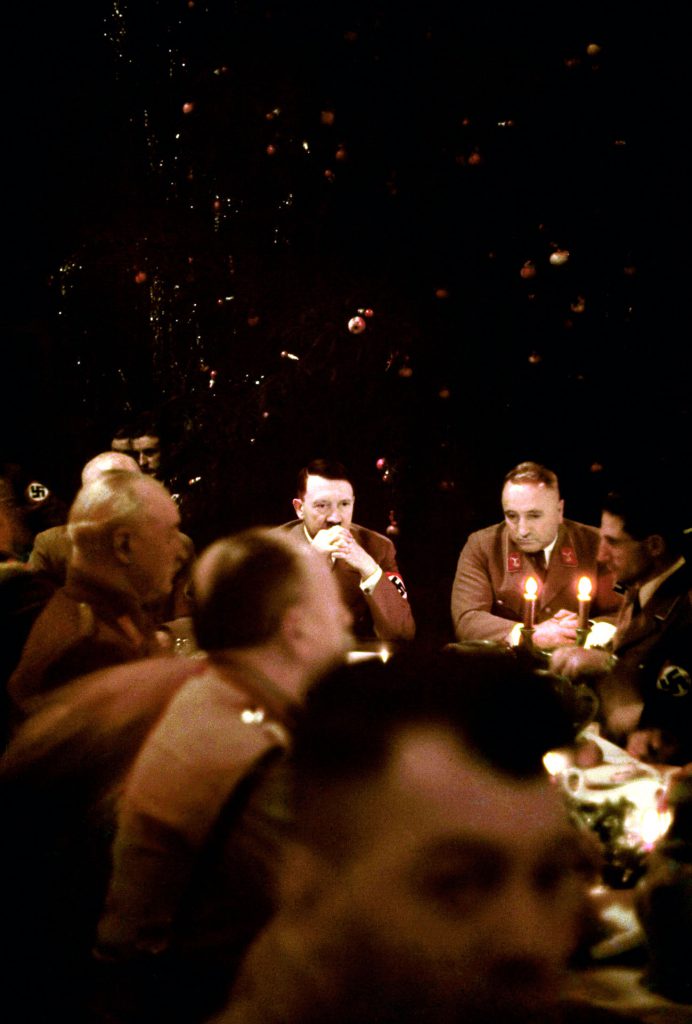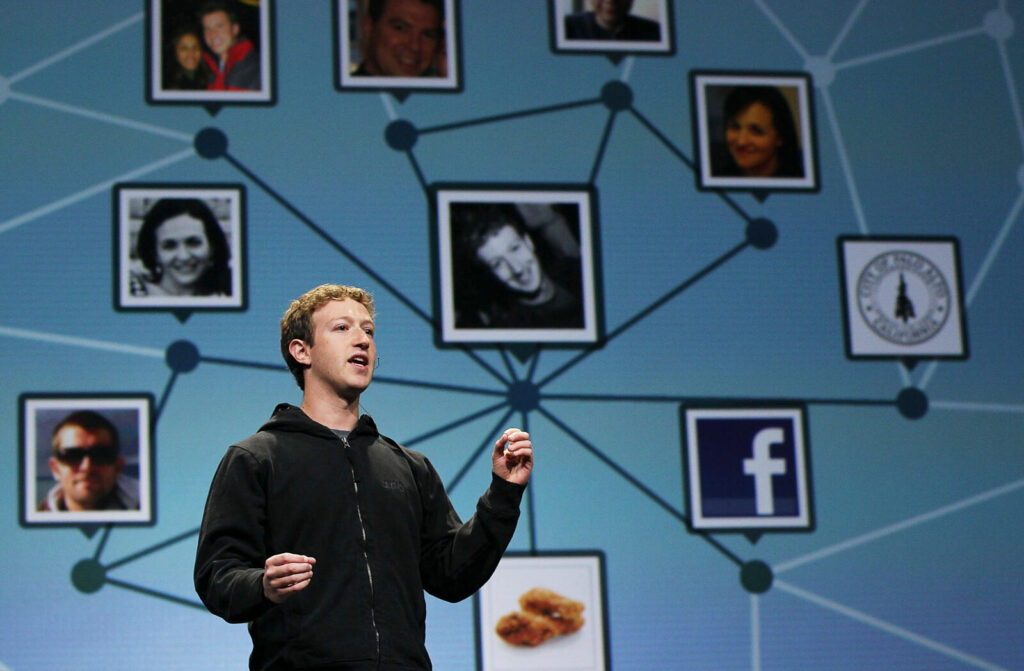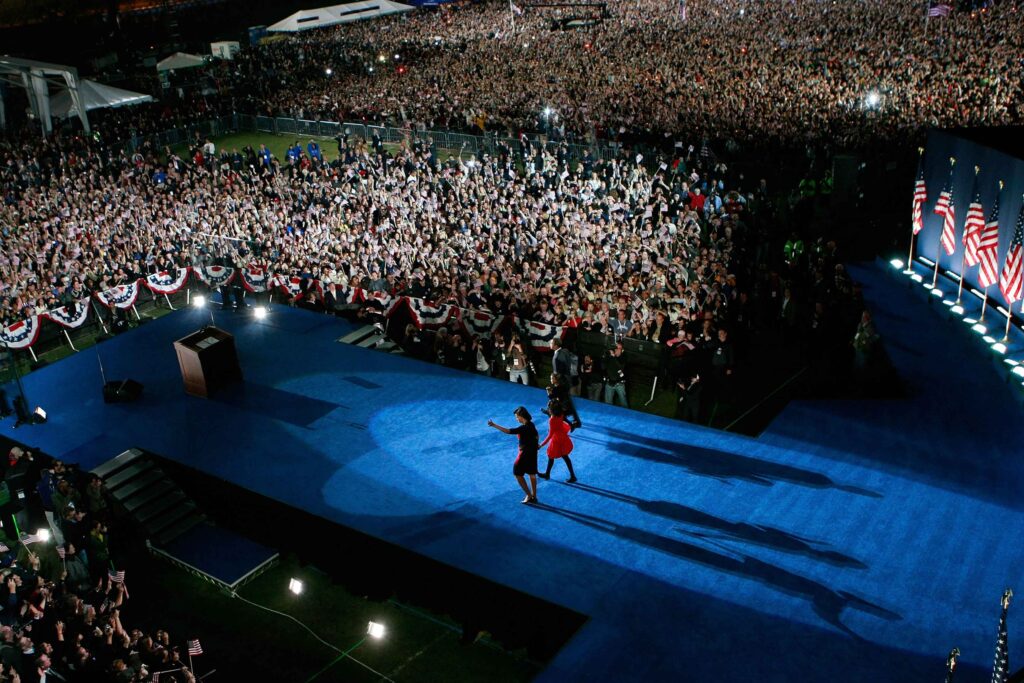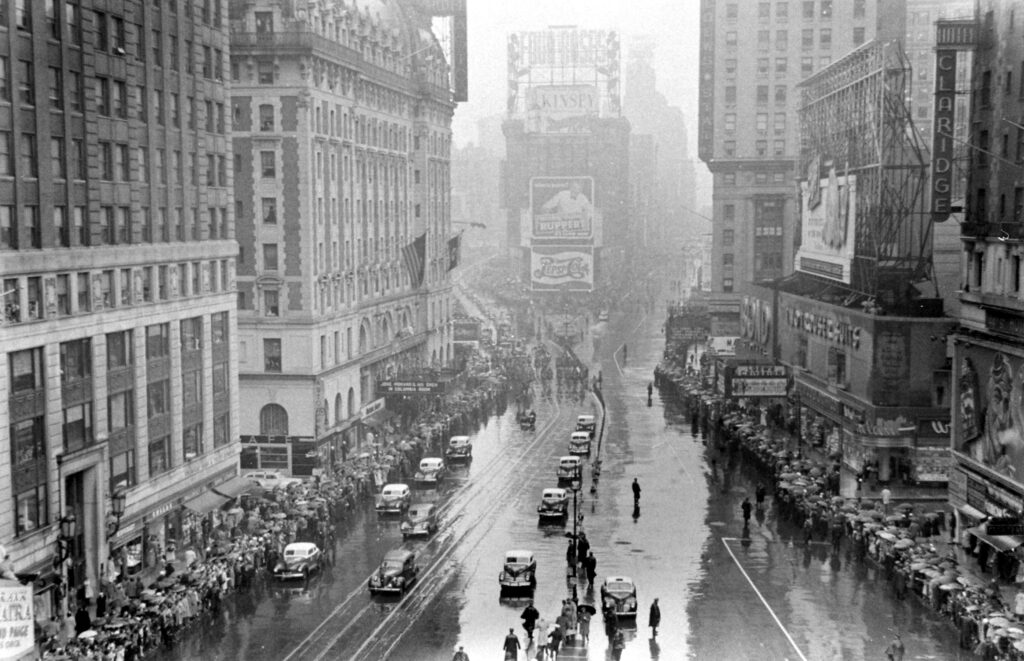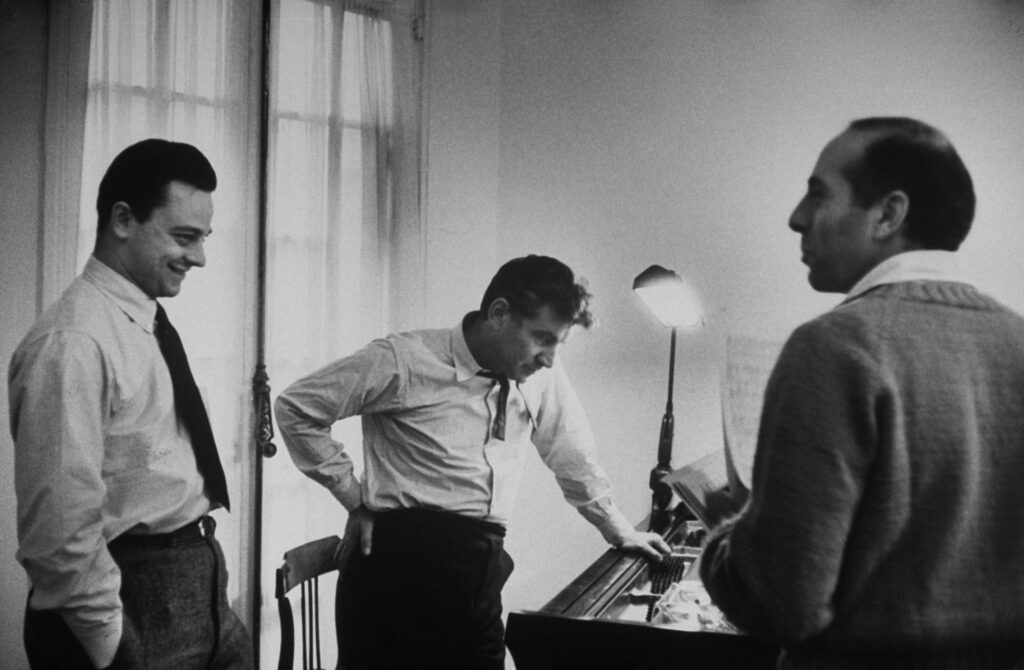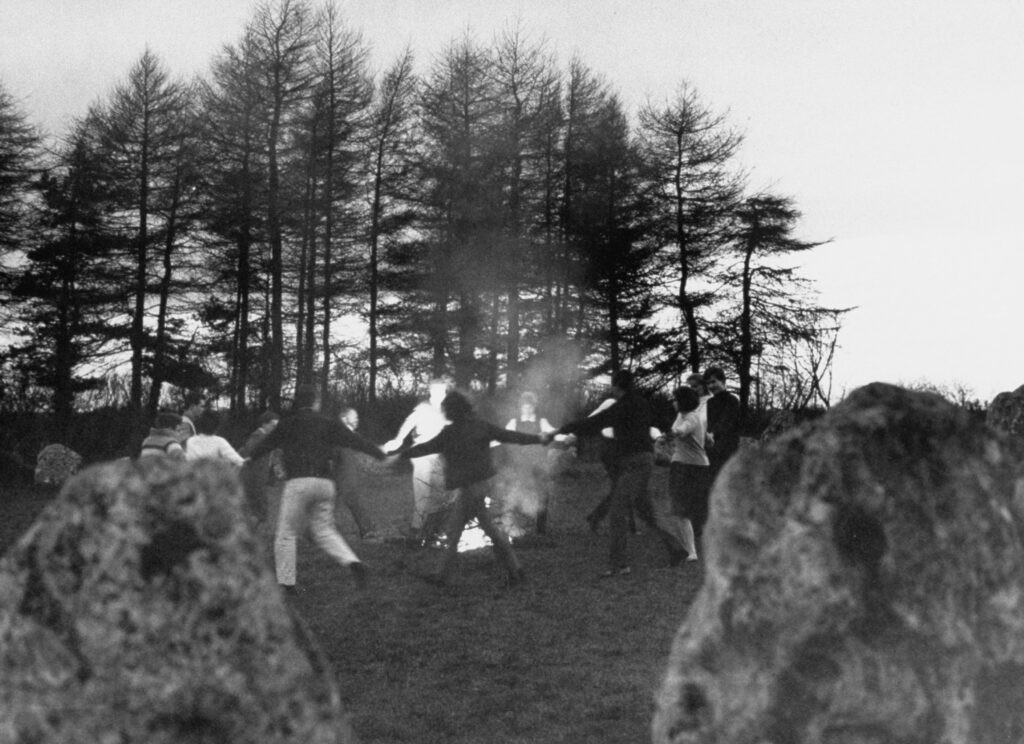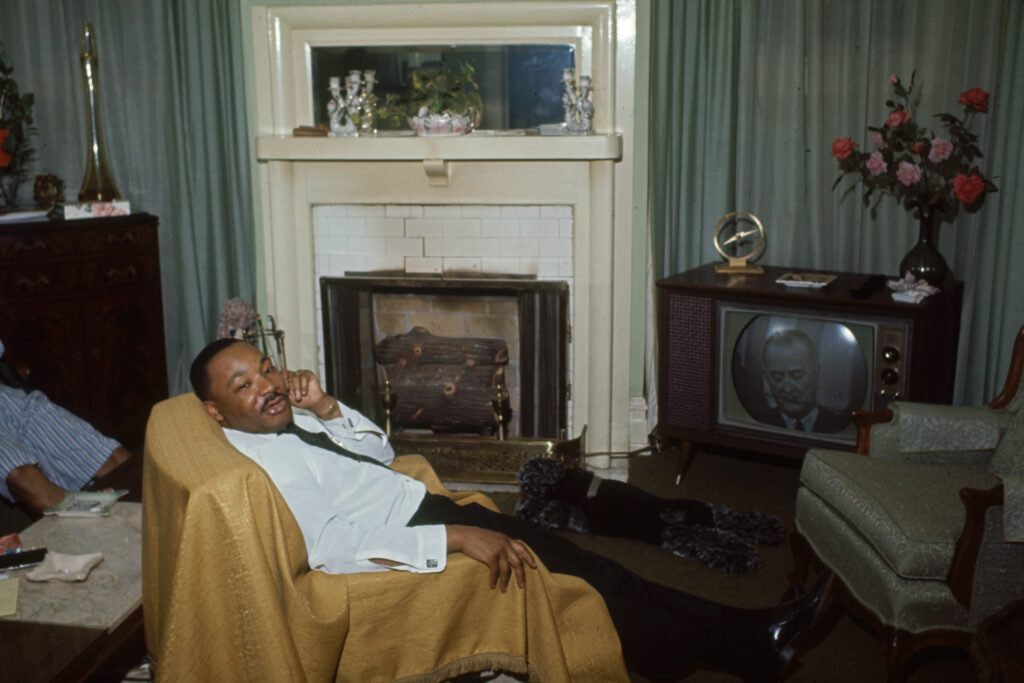The images are chilling, bordering on surreal: Surrounded by fellow Nazis, Adolf Hitler presides over a Christmas party. Swastika armbands jarringly offset the glint of ornaments and tinsel; candles illuminate the festive scene. Confronted with the scene, a viewer might reasonably ask: How could Nazi leaders reconcile an ideology of hatred, conquest and extermination with the joyous spirit of the holiday, much less its celebration of the birth of the Jewish Christ?
In 1937 Nazi propagandist Friedrich Rehm in 1937 actually argued that “real” Germans should remove any vestiges of “oriental” religion from the holiday by harking back to the pagan Yule, an ancient Northern European festival of the winter solstice. He said, “We cannot accept that a German Christmas tree has anything to do with a crib in a manger in Bethlehem. It is inconceivable for us that Christmas and all its deep soulful content is the product of an oriental religion.” An eye-opening 2009 exhibit at Cologne’s National Socialism Documentation Centre featured early Nazi propaganda attempts to make over the holiday: swastika-shaped cookie-cutters; sunburst tree-toppers to replace the traditional ornament Nazis feared looked too much like the Star of David; rewritten lyrics to carols that excised all references to Christ.
But by the time Hitler, Mussolini and the Japanese had dragged the Allies into the Second World War, the Reich’s focus had shifted to more practical matters. Rather than trying to dissuade millions of Germans from celebrating Christmas the way they had for generations, Hitler, Goebbels and the rest instead encouraged their compatriots to send cards and care packages to the troops.
As for the religious views of Hitler himself, the evidence is hardly conclusive: In public statements he sometimes praised Christianity (once calling it “the foundation of our national morality”), but in private conversations—including one recalled by the Third Reich’s official architect, Albert Speer—the Führer is said to have abhorred the faith for what he deemed its “meekness and flabbiness.”
Hitler did, of course, fervently worship one thing above all else: the so-called Aryan race. Looking at the utterly banal, ordinary faces and figures in these photographs, however, it’s hard to believe that anyone, no matter how fanatical or deluded, could believe that the men at that long-ago holiday party comprised anything more than a roomful of gangsters and common thugs.

Scene from a Christmas party attended by Adolf Hitler and other Nazis, date unknown.
Hugo Jaeger The LIFE Picture Collection/Shutterstock

Scene from a Christmas party attended by Adolf Hitler and other Nazis, date unknown.
Hugo Jaeger The LIFE Picture Collection/Shutterstock

Scene from a Christmas party attended by Adolf Hitler and other Nazis, date unknown.
Hugo Jaeger The LIFE Picture Collection/Shutterstock

Scene from a Christmas party attended by Adolf Hitler and other Nazis, date unknown.
Hugo Jaeger The LIFE Picture Collection/Shutterstock

Scene from a Christmas party attended by Adolf Hitler and other Nazis, date unknown.
Hugo Jaeger The LIFE Picture Collection/Shutterstock

Scene from a Christmas party attended by Adolf Hitler and other Nazis, date unknown.
Hugo Jaeger The LIFE Picture Collection/Shutterstock

